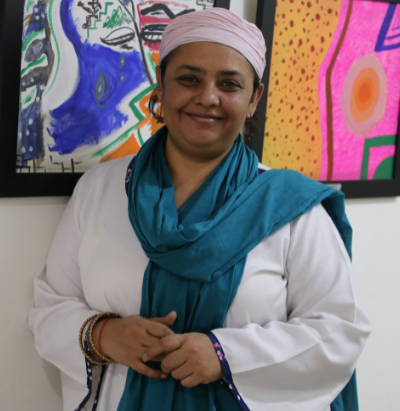Media work: As someone who started writing in print, believed in the oral power of television features, migrated to the web, trained rural field reporters on mobile WhatsApp, was a social media consultant for Fairtrade India and continues to be an observer of Indian media habit, her own writing, reportage and media experiments, span the offline and online, legacy and social media, mural and mall, photography and journalism. Her media practice is located on ideas about mainstream and margins in India.
Interviews Poet Arundhathi Subramaniam, Bhava Samvad Kalinga Literature Festival 2020
Web A meditation by the sea Mandela, an ordinary India remembers (Yahoo)
London, a discounted bookistan (Scroll)
A Martyr’s wife
Social media Good news no news Whats app in the lockdown
TV 3 Independence Day specials Kick 5 pick 5
Published blogposts as a media observer
Art & media choices through a pandemic (The Wire) Share this piece. It has some good news (Newslaundry) Why I won’t be watching the FIFA world cup on TV (Sportskeeda) A new classification for books in stores (Scroll) Can there be one book for the CEO & the farmer?
Online community comments as blogpost Insights from a public FB post Knowing your stars from your salesmen
LIVE: Culture of dialogue (NDTV)
Reviews: Portrait of a lady remaking history (Just Cinema) When a people’s eyes are as moist as the land: The Tharu speak(Nepal Picture Library Multimedia exhibition)
Lead, Communication campaigns
Participatory photography: Your Food your farmer (Photo exhibition by common Indians at a busy metro station)
Street mural: Live mural making experiment on busy intersection in an upper middle-class neighbourhood in Bengaluru. Examining the passersby connect with art and farmers who were painting as well.
Mall audience: Audience engagement exercises in unusual settings to forefront the farmer in urban, public view. Experiment was to unveil the then world’s largest T shirt made by Indian cotton Fairtrade farmers at a Bangalore mall, with farmers and mall audiences interacting directly. Along with the above, a podcast on urban conversations about farmers, a curated Twitter chat on Fashion and green travel, a documentary film fest, were all elements in a Fairtrade communication campaign to explore links between media and farmers. This was done as part of a Fairtrade weekend at Bengaluru, in partnership with Srishti School of Art & Design Faculty & Vidyashilp Academy, in 2015. (The latter as part of a Fairtrade Schools Pilot Programme)
Multimedia: Mango Memories (Yahoo)
TV: Republic of Hunger (NDTV)






